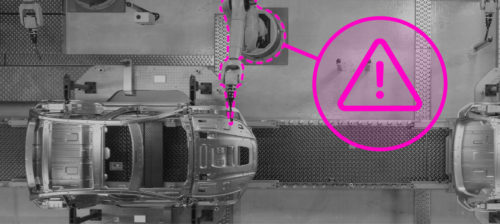Using refrigerants
Refrigeration and air conditioning equipment, in the past, has relied on chlorofluorocarbon (CFC) refrigerants to operate. After evidence began mounting that CFCs were harming the earth's ozone layer, their production in the U.S. was banned under the Montreal Protocol, effective December 31, 1995.
|
Refrigeration and air conditioning equipment, in the past, has relied on chlorofluorocarbon (CFC) refrigerants to operate. After evidence began mounting that CFCs were harming the earth’s ozone layer, their production in the U.S. was banned under the Montreal Protocol, effective December 31, 1995.
Refrigerants released many months or years ago are suspected of affecting the ozone layer today. Over time, these refrigerants slowly rise to the earth’s stratosphere where they react with the ozone layer. When this happens, new chemical compounds form and ozone no longer exists in its original form.
Many refrigerants contain chlorine atoms that are thought to combine with ozone atoms to cause ozone depletion. Most refrigerants in use today are classified as CFCs, hydrochlorofluorocarbons (HCFC), and hydrofluorocarbons (HFC).
CFCs contain chlorine, fluorine, and carbon and are considered the most damaging because they reach the stratosphere intact.
A second group of refrigerants in common use is HCFCs. They contain hydrogen, chlorine, fluorine, and carbon. The hydrogen makes them less stable in the atmosphere. These refrigerants have much less potential for ozone depletion because they tend to break down in the atmosphere. The small amount of chlorine in these compounds is released before it reaches and reacts with ozone. This group is due for phaseout in 2020 and 2030 (depending on the compound) because of the chlorine content.
The third group of refrigerants is HFCs. They contain no chlorine and do not harm the ozone layer.
Other refrigerants are mixtures of some existing refrigerants and are called azeotropes and blends.
Azeotrope refrigerants are blends that are combined in such a manner that they will not separate into their individual components. They are considered a unique refrigerant even when they leak into the atmosphere.
Some blended refrigerants are not azeotropes, they are sometimes referred to as “near azeotropes” or simply as blends. They also are considered a unique refrigerant when they leak into the atmosphere.
As existing supplies of refrigerants become depleted, substitutions must be made. The following tables illustrate which refrigerants and blends will work and what must be done to implement their use.
Plant Engineering magazine extends its appreciation to E.I. DuPont Co., Suva Refrigerants Div. and York International Corp. for their assistance in the preparation of this article.
Equipment options
With the phaseout of CFCs, some decisions have to be made.
Convert to service refrigerants
Service refrigerants, such as R-401A and R-402A, make good sense because they offer proven performance, are easy to use, result in a low-cost retrofit, and will be available longer than the expected service life of most equipment.
They are economical because only 75% to 90% of the CFC charge is required, minimal changes are needed, and retrofitting is simple and easy.
Convert to HFC
Retrofitting to an HFC refrigerant such as R-134a or R-404A is more expensive and involved than retrofitting to a service refrigerant. An HFC retrofit requires conversion to a polyol-ester lubricant and three or more lubricant flushes may be needed. However, HFC refrigerants are not scheduled for phaseout, which could make their use cost-effective in equipment expected to last 20 yr or longer.
Replace the unit
If the future performance of a system is deemed unreliable, total replacement is probably the most cost-effective solution. The difficulty of retrofitting old or malfunctioning equipment might not be worth the cost or effort. An additional bonus of replacing aging units with new equipment designed to use HFC refrigerants is that the new units can achieve improved energy performance.
Keep CFCs until supply runs out
This might be the best option for older units that are running properly and have no significant leakage. Before selecting this option for equipment with a long expected service life, remember the price of CFCs will continue to increase and availability will decline.
Convert to R-22
R-22 is frequently considered as a retrofit choice because it has been in use for years and people are familiar and comfortable with it. Although R-22 is currently inexpensive, total conversion costs are usually higher than converting to a service refrigerant because compressor modification or replacement as well as other equipment changes are often required.
Refrigerant cylinder identification
| Refrigerant | Cylinder color |
| R-11 | Orange |
| R-12 | White |
| R-13 | Light blue |
| R-22 | Light green |
| R-23 | Light blue-gray |
| R-123 | Light blue-gray |
| R-134a | Light blue |
| R-401A | Pinkish-red (coral) |
| R-401B | Yellow-brown (mustard) |
| R-402A | Light brown (sand) |
| R-402B | Green-brown (olive) |
| R-404A | Orange |
| R-407C | Medium brown (brown) |
| R-408A | Medium purple |
| R-409A | Medium brown (tan) |
| R-410A | Rose |
| R-500 | Yellow |
| R-502 | Light purple (lavender) |
| R-503 | Blue-green (aqua) |
| R-507 | Blue-green (teal) |
| R-508B | No color, tag it |
Refrigerant replacement guide
| Product | Application | Comments |
| Source E.I. DuPont Co. | ||
| To replace R-12 and R-500 Short term (HCFC) | ||
| R-401A | Retrofit R-12 Medium/low temperature ,best above -15 F evap. | Preferred retrofit option for R-12. No oil change in small, close-coupled systems. |
| R-409A | Retrofit R-12 Medium/low temperature, best above -15 F evap. | Retrofit option for R-12. |
| R-401B | Retrofit R-500, R-12 Higher capacity for low temp. R-12, best below -15 F evap | A quick, cost-effective retrofit; one oil change. R-12 retrofit where higher capacity is needed at low temperatures. No oil change in small, close-coupled systems. |
| Long term (HFC) R-134a | New equipment and retrofit R-12. Medium temperatures. | Good option for new equipment. Also retrofit option; best above 20-F evap; less costly option for retrofit. |
| To replace R-502 Short term (HCFC) | ||
| R-402A | All R-502 temperatures | Preferred retrofit option for R-502. One quick oil change for retrofit; higher capacity. |
| R-408A | All R-502 temperatures | Retrofit option for R-502 |
| R-402B | Higher discharge temp./EER | Preferred for systems where higher discharge temp. is desired; mineral oil commonly used. |
| Long term (HFC) R-404A | All R-502 temperatures | Best option for new equipment. |
| R-507 | All R-502 temperatures | Also retrofit option; R-402A less costly option for retrofit. |
| To replace R-13, R-503 ,and R-23 Long term (HFC) | ||
| R-508B | New equipment and retrofit Very low temperature applications: -40 to -150 F | One refrigerant replaces three. Used by major OEMs. Easier and more cost effective retrofit than R-23. |
| To replace R-22 Long term (HFC) | ||
| R-407C | Air conditioning and heat pumps | Available today for retrofit and new equipment |
| R-410A | Only for equipment designed for air conditioning and heat pumps. | High-pressure/high-efficiency refrigerant of the future. |
| To replace R-11 R-123 | Low-pressure chillers. | Modifications may be required. |
What to expect after a retrofit (general rule-of-thumb)
| Refrigerant | Discharge pressure, PSI | Suction pressure, PSI | Discharge temperature, F | Refrigeration capacity, % |
| Notes: R-402A, R-402B, R-404A, and R-408A are compared to R-502. R-134a, R-401A, R-401B, and R-409A are compared to R-12. R-407C is compared to R-22.Source E.I. DuPont Co. |
||||
| R-134a | +10 | -2 | -10 | -10 |
| R-401A | +20 | Same | +25 | +10 |
| R-401B | +30 | +2 | +30 | +15 |
| R-402A | +40 | +5 | -5 | +15 |
| R-402B | +30 | +5 | +15 | +15 |
| R-404A | +20 | Same | -10 | Same |
| R-407C | +15 | Same | -15 | Same |
| R-408A | +5 | Same | +20 | +5 |
| R-409A | +25 | Same | +30 | +10 |
| R-507 | +30 | Same | -15 | Same |
Safe handling of refrigerants
Refer to the Material Safety Data Sheet (MSDS) prior to handling and use.
Store refrigerants in a clean, dry area out of direct sunlight. Never heat cylinders above 125 F.
Never pressurize systems or vessels containing refrigerants with air for leak testing or any other purpose.
Never tamper with cylinder valves or pressure relief devices.
Never refill disposable cylinders with anything. Do not use disposable refrigerant cylinders as compressed air tanks.
Wear protective clothing such as gloves and eye protection when handling refrigerants.
Avoid contact with liquid refrigerant, frostbite may occur.
Avoid exposure to vapors from spills or leaks.
Evacuate the area if a large spill occurs. Return only after the area has been properly ventilated.
Do not use handheld leak detectors to check for breathable air.
Verify proper cylinder hookup to system.
Check that the cylinder label matches the color code.
Open cylinder valves slowly.
Avoid rough handling of refrigerant cylinders.
Verify that the system has been completely evacuated with a vacuum pump before cutting any lines.
Before welding or brazing, evacuate the equipment and then break the vacuum with air or nitrogen. Do not perform any repair on pressurized equipment.
Always ventilate the work area before entering and using open flames.
Source E.I. DuPont Co.
Do you have experience and expertise with the topics mentioned in this content? You should consider contributing to our CFE Media editorial team and getting the recognition you and your company deserve. Click here to start this process.





